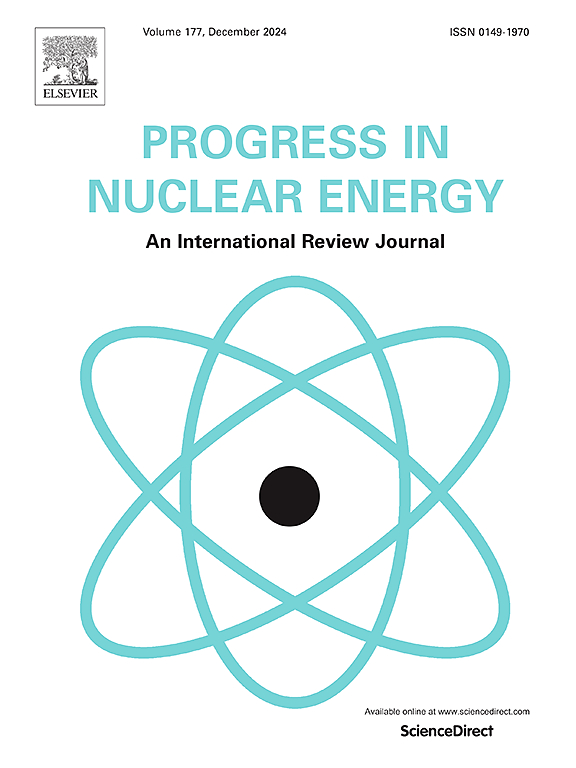Generalized Hébert method for double-heterogeneity problem
IF 3.3
3区 工程技术
Q1 NUCLEAR SCIENCE & TECHNOLOGY
引用次数: 0
Abstract
The double-heterogeneity problem, caused by stochastic media in the dispersion fuel, poses challenges to nuclear reactor physics calculations. Hébert model is a classical double-heterogeneity calculation method derived from collision probability method (CPM), and has been implemented in some lattice physics codes. However, it is not convenient for the Hébert CPM model to calculate the dispersion fuels with complex geometry. A generalized Hébert method is proposed in this paper by introducing the concept of equivalent flux, and it can be easily implemented within any deterministic neutron transport solver. The generalized Hébert method is subsequently implemented in the Laputa code based on method of characteristics (MOC). Finally, a numerical validation is conducted between the Hébert-MOC model and Monte Carlo explicit modeling, as well as the Sanchez-MOC model, demonstrating the generalized Hébert method is very prospective.
求助全文
约1分钟内获得全文
求助全文
来源期刊

Progress in Nuclear Energy
工程技术-核科学技术
CiteScore
5.30
自引率
14.80%
发文量
331
审稿时长
3.5 months
期刊介绍:
Progress in Nuclear Energy is an international review journal covering all aspects of nuclear science and engineering. In keeping with the maturity of nuclear power, articles on safety, siting and environmental problems are encouraged, as are those associated with economics and fuel management. However, basic physics and engineering will remain an important aspect of the editorial policy. Articles published are either of a review nature or present new material in more depth. They are aimed at researchers and technically-oriented managers working in the nuclear energy field.
Please note the following:
1) PNE seeks high quality research papers which are medium to long in length. Short research papers should be submitted to the journal Annals in Nuclear Energy.
2) PNE reserves the right to reject papers which are based solely on routine application of computer codes used to produce reactor designs or explain existing reactor phenomena. Such papers, although worthy, are best left as laboratory reports whereas Progress in Nuclear Energy seeks papers of originality, which are archival in nature, in the fields of mathematical and experimental nuclear technology, including fission, fusion (blanket physics, radiation damage), safety, materials aspects, economics, etc.
3) Review papers, which may occasionally be invited, are particularly sought by the journal in these fields.
 求助内容:
求助内容: 应助结果提醒方式:
应助结果提醒方式:


